Projects
Designing Project for a Museum
Group Project | Duration : 5 weeksIn collaboration with
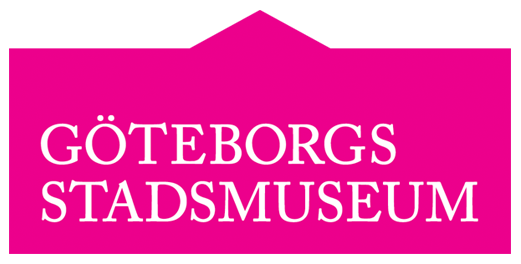
Design Goal: To humanize a physical place, making the past come alive
This project was done in a group of 4 including myself as a part of course Designing Thinking & Innovation. The aim was to make Lilla Änggården, a museum in Gothenburg, Sweden, come alive. Lilla Änggården is an old
house that was bequeathed to the Gothenburg city museum in the 1970th by the family Gren that lived there for almost 100 years. The house lies on the foot of the Änggården mountains and offers rich history and a
lovely garden.
The challenge was how can people’s activities from the past be displayed outdoors and their stories told without people there to tell them. The double diamond design thinking process was used in the background
with various different small steps within it.
Methods
My role and responsibilities
- Conducted over 5 interviews with people from different age spans to understand their expectations from Lilla Änggården, the muesum.
- Created a persona for parents to realize their needs, wants, feels and does.
- Contributed with the group to come up with How Might We's (HMW) to design an innovative solution for our problem.
- Came up with the Anti-problem method for idea generation especially to identify ways to solve the problem opposite to our current problem.
- Designed the final solution with other group memebers and validated it before finalizing.
Design Process
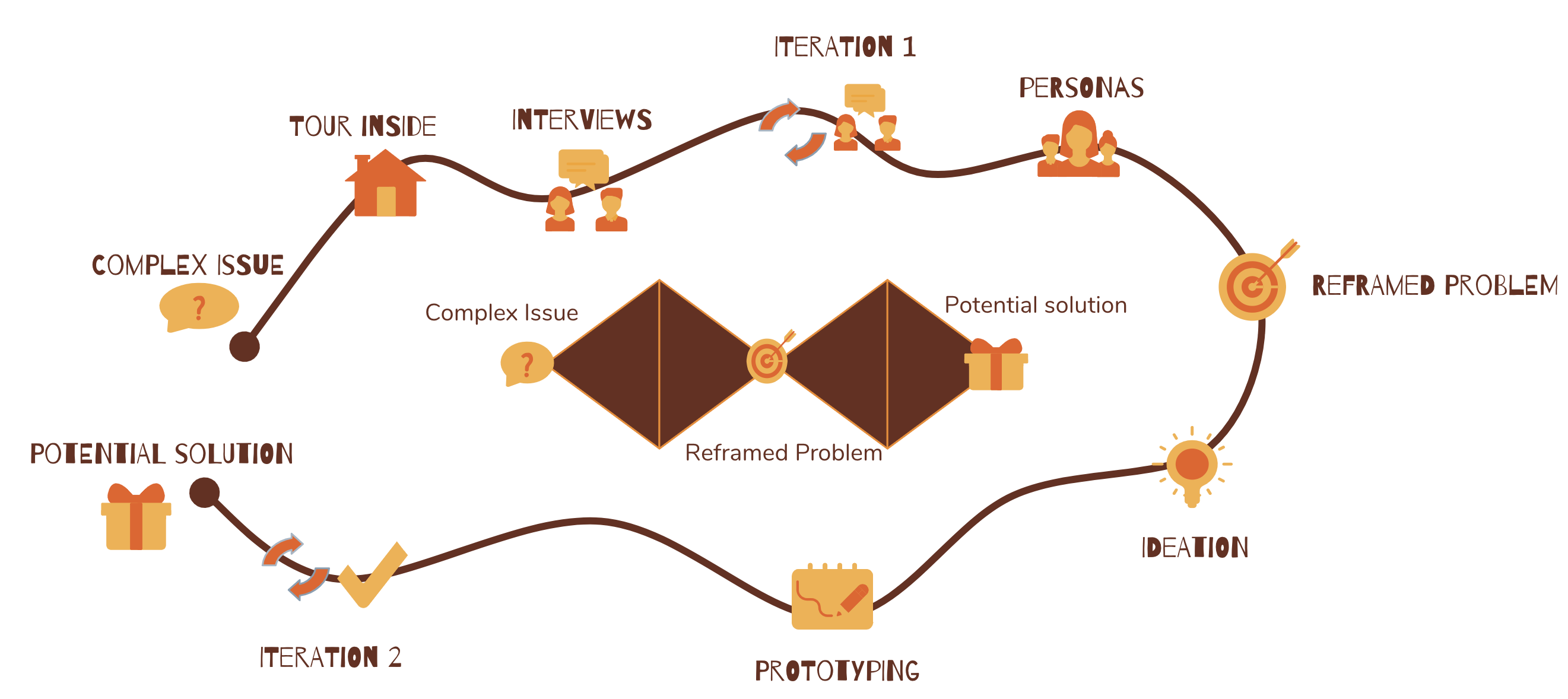
House tour & Interviews
Empathize
In the beginning, we realised that we needed to experience Lilla Änggården in order to understand what to focus on.
We got a lot of inspiration and insights from this house tour we did together with the representatives. We found out that it was really helpful
to have the guides with us who knew the stories about the the old items and persons who lived here. These stories made the house come alive.
We realised that we can focus on persons to make the history more interesting.
So started our interivews near Lilla Änggården. For the first round of interviews, we tried to talk to people in all age spans, from juniors to seniors.
And it became clear that a lot of the answers contradicted. For example, a lot of people told us they would like to end their walks with a fika in a cafe. At the same time, the neighbours told us that they were happy with Lilla Änggården as it is, and they would not like the place to be commercialized.
We went home with a lot of great insights, but at the same time, we were even more confused, because of all contradictions. This led us to out first iteration.

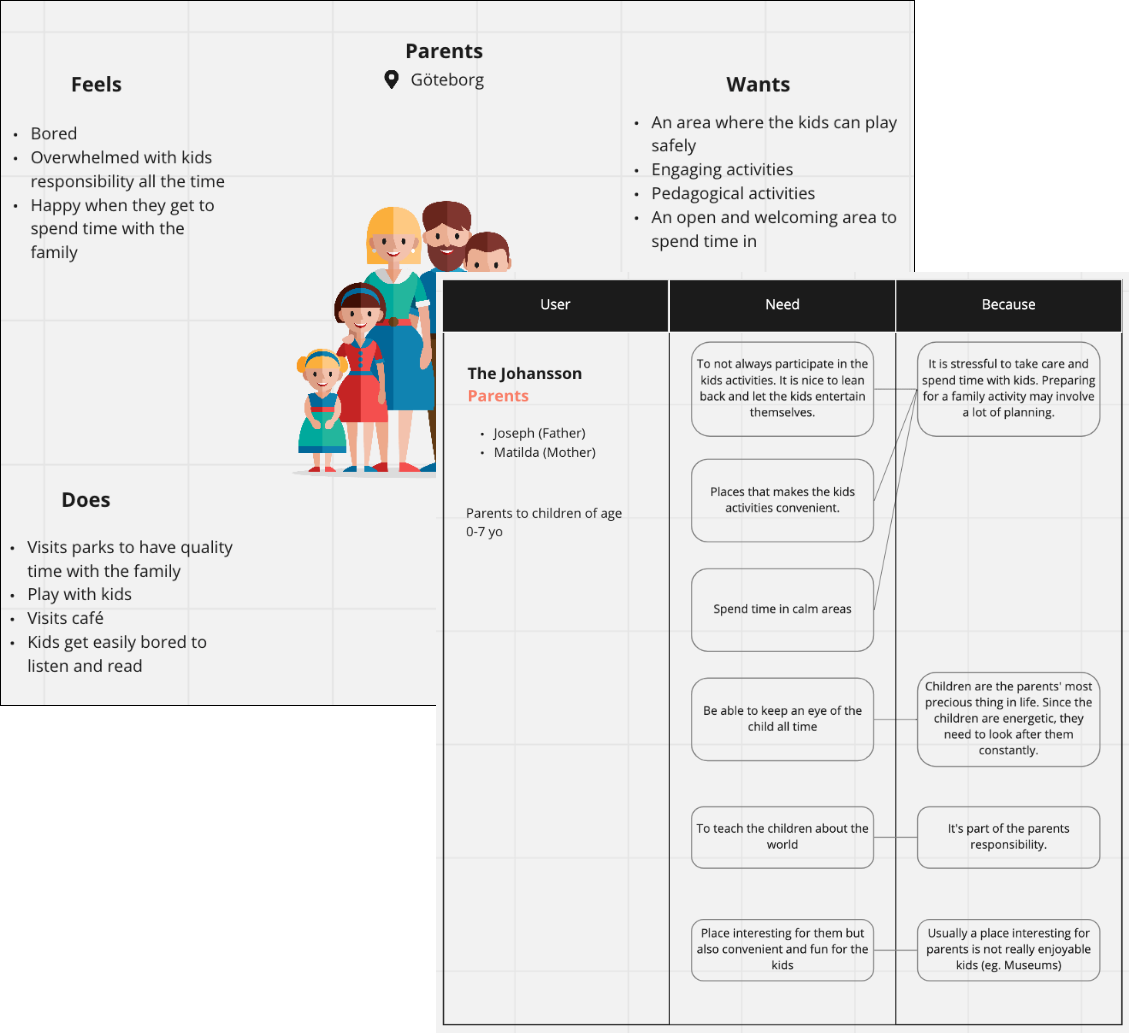
Define
We narrowed down our target group to just families as that was the most common group visitng there.
However, we wanted to understand why there were more families come there and what exactly bring them there.
One assumption we had, was that families go there as there is a botanical garden nearby and kids liked to play there.
However, we were quite surprised when we understood that the parents complained about the gaming facilities and activities in the garden saying that “were not engaging” for their kids.
Thus, we conducted more interviews, in order to create a typical visitor profile that could summarize our insights. Later we also realised that the kids of different ages have different needs and so do their parents. Thus we limited our target group to children of age 4-12.
Thus, later we create two separate personas: for parents and for kids as
their needs are completely different. Further, we also created Point of Views (POV) for both parents and kids to define their needs.
Reframing problem
We took the inspiration about the history we got from the house tour and combined it with the insights we got from the interviews. Then we formed How Might We (HMW) questions to redefine the problem based on the insights we got. A properly framed How Might We doesn’t suggest a particular solution, but gives you the perfect frame for innovative thinking. We came up with 3 HMWs from the defined personas and Point of Views and then combined into a single one. Thus, we went from how can we make Lilla Änggården come “alive” without having personnel on-site, to how might we make the history of Lilla Änggården interesting and engaging?
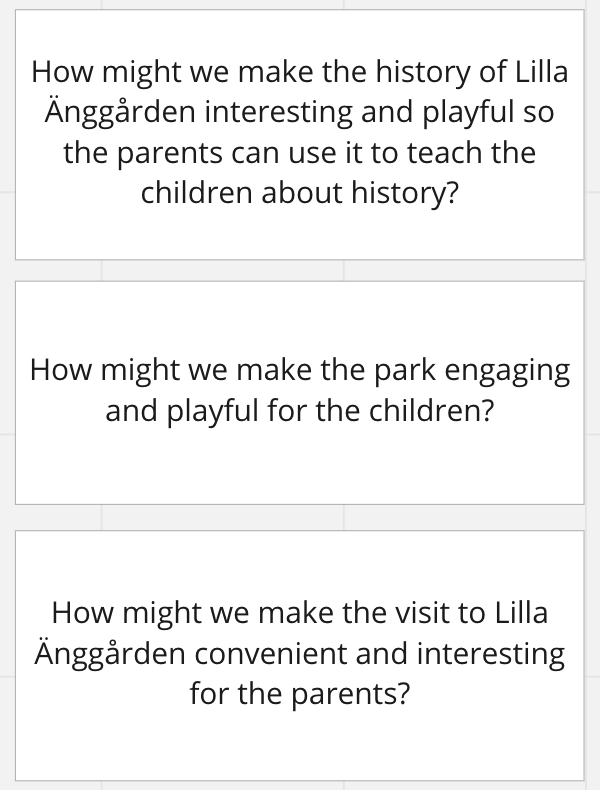

Ideation
Once we were ready with our problem statement, we were excited to finally come up with interesting solution and thus, we proceeded to idea generation.
We used various methods like Crazy 8's, Affinity Mapping and Anti-problem for idea generation, but the most interesting one was “Anti-problem” where we identified
ways to solve the problem opposite to our current problem. This helped us come up with significant needs. Some interesting insights we got were differentiating with history and make something interactive.
We also considered the constraints and potential challenges. As for the constraints, during initial meeting with our project partner we learnt that there are some budget constraints like not have a personal all the time at Lilla Änggården.
Moreover, as there are no fire exists designed, they cannot have a cafe in house. However, we made sure that our solution won’t have to compromise due to these constraints.
Solution
For the prototype, we decided that to make sure that the history about the
house and the people who were part of its history are accessible to our target visitors from the outside.
However, before finalizing we decided to test our solution with target users at Lilla Änggården. And this let it to our biggest iteration which went back to modifying our persona as
the solution we proposed was encouraged by elderly people as well.
Though it was quite a last moment to modify the target group, none of us was hesitant to do it and improve the solution based on feedback. After all, why do we have the evaluation phase for?
Final Solution
For our final solution, we came up with 2 ideas. The first one is to allow people to access the house, and the second one is for people to know more about the historical character.
Thus, for the first part we proposed to provide a big sign board in front of the house which will be the floor map of the house with QR codes.
Our idea is to have one QR code for each room in the drawing to show the inside part of the house, so people can have access to the house, see what’s inside without really going in.
And this could help the museum to solve their problem at having no full-time personnel on-site.
Other part of the solution includes a mail box which will have a map of surroundings where people can go to the location as shown in the map, where they will find different checkpoints with a sign boards of
different characters from the house and some information about them. This can be also used as a treasure hunt for kids and they will be different activites at different checkpoints.
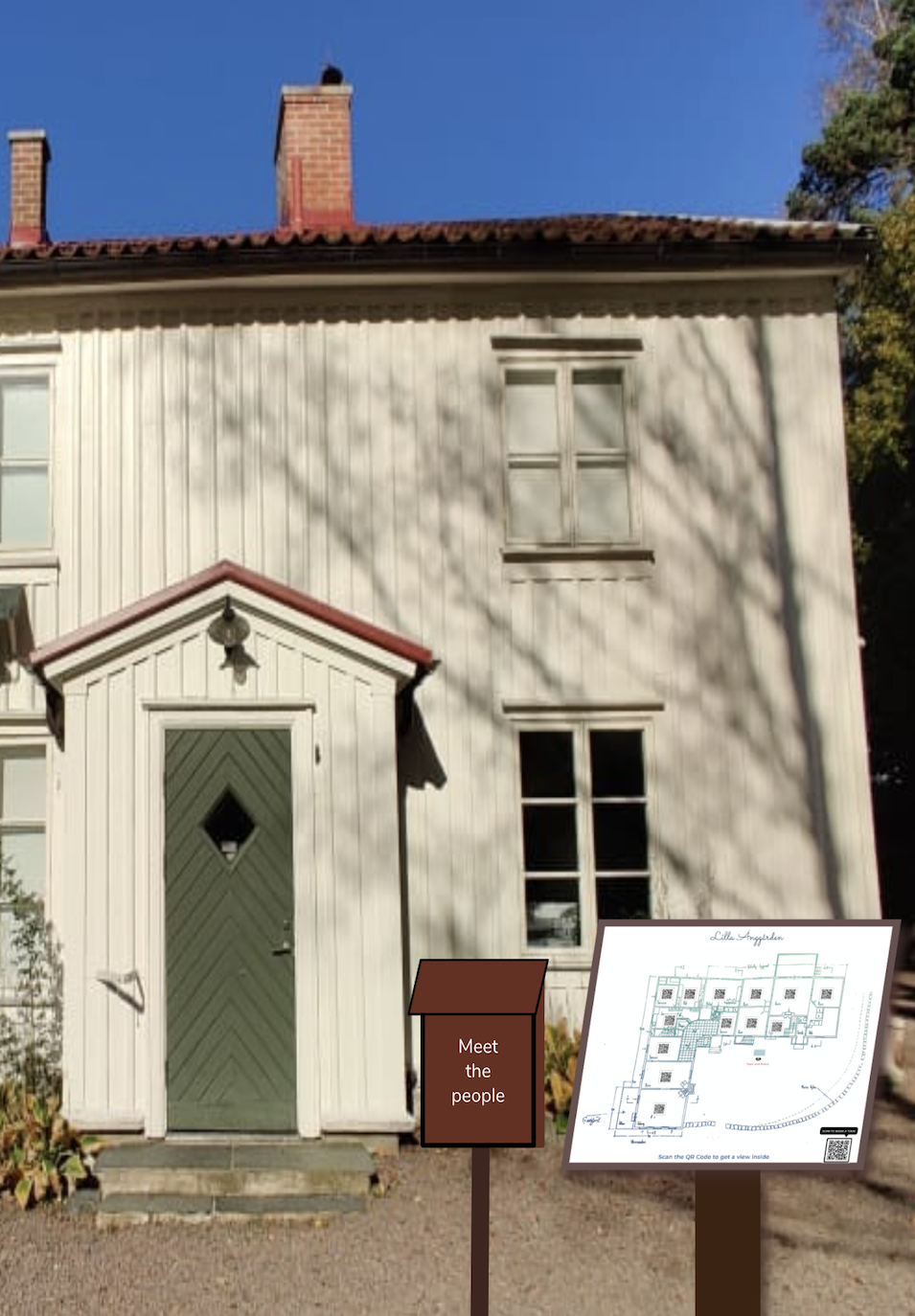
© Copyright © All rights reserved
